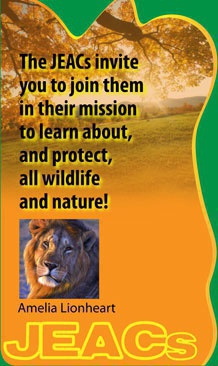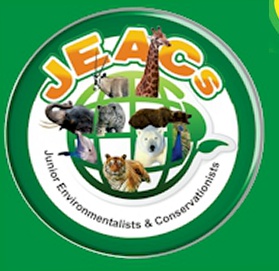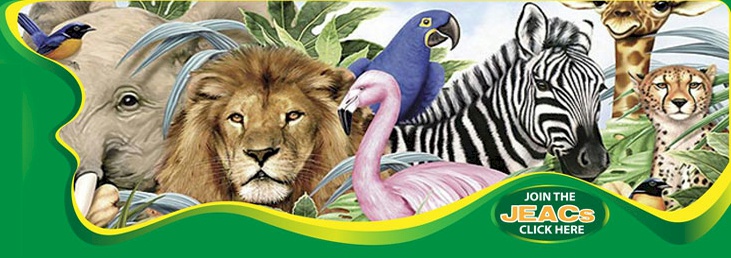














YOU CAN MAKE A DIFFERENCE
You are UNIQUE! This means YOU have special gifts to help change the world. Talk to your parents about ways in which you can recycle or conserve at home. Ask the wonderful folk at zoos and conservations close to you how you can get involved in all kinds of fun and educational activities. Get your friends and neighbours involved. Look up websites for zoos and wildlife conservations, and check out what’s going on around the world!
You are UNIQUE! This means YOU have special gifts to help change the world. Talk to your parents about ways in which you can recycle or conserve at home. Ask the wonderful folk at zoos and conservations close to you how you can get involved in all kinds of fun and educational activities. Get your friends and neighbours involved. Look up websites for zoos and wildlife conservations, and check out what’s going on around the world!
Kinnaird Wildlife Conservation Centre (KWCC), situated in the Cairngorms mountain range in Scotland, is managed by Dan MacDonald who married Jay, Umedh’s youngest aunt. KWCC have their biggest success in captive breeding with the Panthera Uncia, commonly known as snow leopards, and these beautiful creatures are currently on the endangered species list. When a second litter of cubs is born, KWCC staff celebrated this success with their community in the form of a huge event, and everyone is thrilled to visit the new cubs. But, the day after the function, it is discovered that the three older cubs, and their parents, are missing, and some days later, petty crooks are discovered leaving the country with pelts of snow leopards in their suitcases. Who is the head of this horrible gang and how did they infiltrate KWCC?
The JEACs, Rohan, Umedh, Amy, Nimal, Anu, Gina, and Mich, arriving three weeks after this contemptible incident, to spend their Christmas holidays at KWCC, are appalled at the news and determined to catch the felons. They meet Brian, a Scottish lad who lives on KWCC, and he immediately joins the JEACs. Brian’s father, Luag, is head of the breeding programme. Angry and upset at the loss of his beloved snow leopards, Brian updates the JEACs further on what he and his best friends, Cormag and Eadan, have discovered.
The JEACs, after listening to Brian, unanimously conclude that the snow leopards are not out of danger yet. They are worried that there may be further nasty incidents at the large winter fundraiser which is to take place in four days. Hundreds of people will be arriving via helicopter, since KWCC is only accessible by air. The JEACs, therefore, put into place a number of plans in order to keep an eye on the snow leopards, and also strive to discover the plot which they are convinced is brewing. Beiste and Clyde, two of the staff members, appear to be misfits at KWCC for numerous reasons, including the unfriendly behaviour of the two dogs, Hunter and Tumbler, towards them. Nobody appears to like the two men.
The JEACs have a wonderful time: playing with the snow leopard cubs, zooming around on ski-doos, living in a castle, enjoying the skills of the ingenious Mr. Q, welcoming Cormag and Eadan into their group, singing, participating in winter sports, and the sheer excitement of finding a secret passage. In the midst of these activities, the JEACs are constantly on the alert, attempting to fit the various incidents, occurring on an almost daily basis, into the puzzle they are building as to what might happen to the snow leopards. They must protect the animals at all costs.
And;
Read the book and join them in their fourth adventure. Also, please read the FOREWORD to the book, by DR. DOUG WHITESIDE, Senior Staff Veterinarian at the Calgary Zoo and a highly renowned veterinarian in North America – it’s super! Finally, don’t forget to use your talents and make our world a better place by protecting our animals and planet!
You can also read excerpts, online, from a few chapters of the book.
Can Snow Leopards Roar?
by
Amelia Lionheart
Join the JEACs – the Patels: Rohan, Nimal, Anu, Gina and, of course, their dog Hunter; the Larkins: Amy and Mich; Umedh Ghosh, Rohan’s best friend; and three Scottish boys: Brian Abercrombie who lives on the Kinnaird Wildlife Conservation Centre in Scotland, and his friends, Cormag and Eadan.
JEACs
by
Amelia Lionheart
Join the JEACs – the Patels: Rohan, Nimal, Anu, Gina and, of course, their dog Hunter; the Larkins: Amy and Mich; Umedh Ghosh, Rohan’s best friend; and three Scottish boys: Brian Abercrombie who lives on the Kinnaird Wildlife Conservation Centre in Scotland, and his friends, Cormag and Eadan.
JEACs
J – Junior
E – Environmentalists
A – And
C – Conservationists
in their fourth exciting adventure!
"In the end we will conserve only what we love. We will love only what we understand.
We will understand only what we are taught." ~Baba Dioum
Known as the "ghost cats of the Himalayas", snow leopards (Panthera uncia) are among the most beautiful of the big cats with their characteristic thick grey spotted fur and long bushy tails. While
snow leopards can growl, chuff, hiss, mew and wail, unlike other relatives such as lions and tigers, they cannot roar. Their range in the high mountains of central Asia extends across twelve countries,
covering approximately 2 million square kilometres. Unfortunately it is estimated that as few as 3,500 of these magnificent cats remain in the wild. Fragmentation and loss of their habitat, illegal poaching
for their hides or bones, a reduction in their natural prey due to illegal hunting, and killing in retribution for when they prey on domestic livestock, have led to the snow leopard being placed on the endangered species list by the International Union for the Conservation of Nature.
Approximately 1 in 7 species on earth that are threatened with extinction are now protected in zoos and aquariums. In some cases the genetic diversity that exists within these conservation institutions is greater than that which exists in the wild. But protecting them in a captive environment is not enough. Accredited zoos such as the Calgary Zoo extend that protection to the natural homes of these species by contributing to in-situ conservation programs. Canadian accredited zoos participate in approximately 800 conservation science programs locally, nationally, and globally. And their contribution to endangered species breeding and reintroduction programs is significant; black-footed ferrets, swift fox, Vancouver Island marmots, whooping cranes, Puerto Rican crested toads, eastern loggerhead shrikes, and Przewalski's horses have been born in Canadian zoos and released into the wild.
Accredited zoos also play an important role in connecting the public with nature and educating about the importance of global biodiversity, conservation, and environmental sustainability. Through exploration of such issues, people re-examine their lifestyle choices and consumption habits and the impact that these choices and habits may have on their environment. This often inspires them to make better choices in their day-to-day lives.
The survival of snow leopards is dependent on partnerships between conservation organizations such as International Snow Leopard Trust, the Snow Leopard Conservancy, and Panthera, as well as other captive conservation institutions such as accredited zoological facilities. There are approximately 650 snow leopards in accredited zoological institutions around the world. This partnership extends far beyond just maintaining a genetic refuge for the species in zoos; it also serves to partner with local people to protect habitat, protect against poaching, and support researchers who study the species in the wild. In addition, this partnership allows for bridging of knowledge gaps between wild and captive populations of snow leopards.
In her book Can Snow Leopards Roar? Amelia Lionheart introduces her readers to the issues that imperil these magnificent cats. Amelia is passionate about the conservation of wildlife and wild spaces. Even more so, through the creation of the Junior Environmentalists and Conservationists (JEACs), she is impassioned to educate and engage today's youth to develop a better tomorrow for species threatened with extinction. The JEACs continue to expand globally and are a great example of how we as a species will embrace change that we help to create.
Dr. Doug Whiteside
Senior Staff Veterinarian, Calgary Zoo
Clinical Associate Professor, University of Calgary Faculty of
Veterinary Medicine
We will understand only what we are taught." ~Baba Dioum
Known as the "ghost cats of the Himalayas", snow leopards (Panthera uncia) are among the most beautiful of the big cats with their characteristic thick grey spotted fur and long bushy tails. While
snow leopards can growl, chuff, hiss, mew and wail, unlike other relatives such as lions and tigers, they cannot roar. Their range in the high mountains of central Asia extends across twelve countries,
covering approximately 2 million square kilometres. Unfortunately it is estimated that as few as 3,500 of these magnificent cats remain in the wild. Fragmentation and loss of their habitat, illegal poaching
for their hides or bones, a reduction in their natural prey due to illegal hunting, and killing in retribution for when they prey on domestic livestock, have led to the snow leopard being placed on the endangered species list by the International Union for the Conservation of Nature.
Approximately 1 in 7 species on earth that are threatened with extinction are now protected in zoos and aquariums. In some cases the genetic diversity that exists within these conservation institutions is greater than that which exists in the wild. But protecting them in a captive environment is not enough. Accredited zoos such as the Calgary Zoo extend that protection to the natural homes of these species by contributing to in-situ conservation programs. Canadian accredited zoos participate in approximately 800 conservation science programs locally, nationally, and globally. And their contribution to endangered species breeding and reintroduction programs is significant; black-footed ferrets, swift fox, Vancouver Island marmots, whooping cranes, Puerto Rican crested toads, eastern loggerhead shrikes, and Przewalski's horses have been born in Canadian zoos and released into the wild.
Accredited zoos also play an important role in connecting the public with nature and educating about the importance of global biodiversity, conservation, and environmental sustainability. Through exploration of such issues, people re-examine their lifestyle choices and consumption habits and the impact that these choices and habits may have on their environment. This often inspires them to make better choices in their day-to-day lives.
The survival of snow leopards is dependent on partnerships between conservation organizations such as International Snow Leopard Trust, the Snow Leopard Conservancy, and Panthera, as well as other captive conservation institutions such as accredited zoological facilities. There are approximately 650 snow leopards in accredited zoological institutions around the world. This partnership extends far beyond just maintaining a genetic refuge for the species in zoos; it also serves to partner with local people to protect habitat, protect against poaching, and support researchers who study the species in the wild. In addition, this partnership allows for bridging of knowledge gaps between wild and captive populations of snow leopards.
In her book Can Snow Leopards Roar? Amelia Lionheart introduces her readers to the issues that imperil these magnificent cats. Amelia is passionate about the conservation of wildlife and wild spaces. Even more so, through the creation of the Junior Environmentalists and Conservationists (JEACs), she is impassioned to educate and engage today's youth to develop a better tomorrow for species threatened with extinction. The JEACs continue to expand globally and are a great example of how we as a species will embrace change that we help to create.
Dr. Doug Whiteside
Senior Staff Veterinarian, Calgary Zoo
Clinical Associate Professor, University of Calgary Faculty of
Veterinary Medicine
FOREWORD
by
Dr. Doug Whiteside
by
Dr. Doug Whiteside
